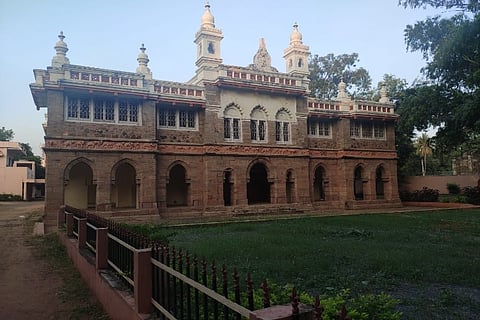

Located in the heart of Vijayawada city, the Bapu museum is one of the biggest archaeological museums of Andhra Pradesh. It is home to more than 1,100 antique objects and artefacts, some of them dating back to prehistoric times.
The museum, which was established 57 years ago by the Andhra Pradesh government, has recently undergone renovations. A brand-new building has been added to the complex, which also houses the Victoria Memorial Hall built in 1887. The new museum recently got equipped with Virtual Reality (VR) technology, which will allow the objects, sculptures and paintings to tell their own stories, mitigating the role of a museum tour guide. But one cannot enjoy any of the new facilities or even visit the museum just yet.
The museum has been closed to the public for more than five years now. When the construction of the new museum building was taken up, the antiquities which were earlier kept in the Victoria Memorial Hall were moved into storage.
Vani Mohan, who took charge as the Commissioner of the Department of Archaeology and Museums about two years ago, says that the new museum building was simply constructed and left there for two years, with no resources to furnish it with the infrastructure required to house the antiquities, including display cases and other accessories.
“We submitted a project report and requested Union government for funds. We have managed to complete nearly 95% of the work so far. We are just waiting for the final rounds of funds to be released so the museum can be opened,” Vani says.
The new museum building
Archaeology Department neglected
For over a year now, there have been reports of the museum opening to the public ‘soon’. But a repeated delay of funds and payments has meant that the work has slowed down repeatedly.
Historian Movva Srinivasa Reddy, who also teaches history at Andhra Loyola College, says that after the state bifurcation in 2014, the archaeology department was shifted to Vijayawada. Matters related to historical conservation were sidelined. “There were more immediate concerns for the government to deal with, and the subject of archaeology and archives was ignored,” he says.
According to Vani, the funds required for overall refurbishing work across the state were about Rs 20 crore. Of these, Rs 8 crore were requested for the Bapu Museum. “The funds come from the Union government, but the state government has to bear a 20% share, that is, Rs 1.6 crore,” Vani explains.
However, owing to the bifurcation and the lack of adequate funds in the state, the Department of Archaeology and Museums has remained neglected and lacks resources. But the history and heritage of the region are invaluable and cannot be replaced if neglected for too long, says Vani. “Maintenance work at the Eluru Museum and Anantapur Museum is also pending due to this. With the next few rounds of funding, we are also planning to work on the Kurnool Museum, Ahobilam Temple, Kondapalli Fort, Mogalrajapuram caves, Akkanna Madanna caves, and Undavalli cave,” says Vani, adding that some money has to be spent on things like hiring staff to make these places accessible.
After numerous delays, it was only last week that the state government’s share was finally sanctioned through a government order issued by the Department of Youth Advancement, Tourism and Culture.
While another round of funds is yet to be released from the Union government, once the state funds are received, Vani says that the Department would be in a position to clear pending payments to contractors, so that the museum can be inaugurated.
Can the museum sustain itself?
While the work at the museum finally appears to be close to completion, opening it up for the public poses yet another challenge: the museum would require nearly 50 administrative, technical and security staff.
The museum also houses a library, which contains valuable books and records dating back 100-200 years, says Srinivasa Reddy. “I was once at the museum for an event and requested to open the library. The books are very well arranged and maintained, and many valuable records are available. But there are no administrative personnel to manage the library once it is opened for public use,” he says.
The Department of Archaeology and Museums is looking for ways to maintain the museum without depending on government funds. “We want an Archaeology Corporation to be set up. With a hike in ticket prices, we could perhaps generate revenue for the maintenance of the corporation and the museum,” Vani says.
The Department is also considering leveraging CSR funds, or a Public-Private Partnership (PPP) funding model. “All the upgradation work would mean very little if the public cannot visit the museum,” Vani says. “A museum cannot just have artefacts preserved and displayed. They must be visited by people. The purpose of a museum is to educate, which is not happening here yet,” Srinivasa adds.